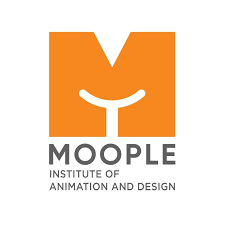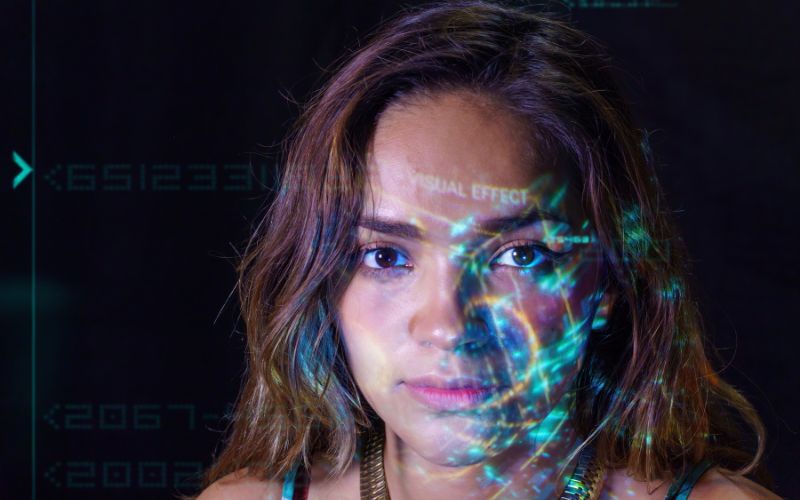The world of visual effects is changing at a pace that is simply unbelievable. Every blockbuster movie, high-budget series, and immersive video game today relies on groundbreaking VFX technology.
In 2025, the demand for highly skilled VFX artists will be greater than ever. Do you dream of crafting jaw-dropping CGI sequences, realistic 3D animations, or mind-blowing special effects? Enroll in a professional VFX course. It can set you on the right path. But what exactly can you expect from such a course in 2025? Let’s explore a bit.
What is a Visual Effects Course All About?
A VFX course trains the students in making digital effects to enhance films, television shows, advertisements, and video games. This course teaches the art of blending real-life footage with computer-generated imagery (CGI). It is to create realistic and immersive experiences.
With the developments of AI, real-time rendering, and virtual production, VFX is not for Hollywood anymore. It’s become a staple for advertising, gaming, VR, AR, and social media content.
A structured course in VFX ensures practical experience with learning industry-standard software and develops the portfolio, ensuring the starting kick for students in their careers.
Why VFX is the Future?
1. Increasing Demand in Film, Gaming, and OTT Platforms
The current boom in the entertainment industry has brought VFX to be at the heart of this explosion. Visual effects bring stories to life, ranging from breathtaking action scenes to magical fantasy worlds.
Netflix, Amazon Prime, Disney+, and their brethren are dashing head-on into the game with visual showmanship, blowing billions of bucks on VFX-rich shows and films. In your mind are the breathtaking landscapes in Game of Thrones. Those hyper-realistic creatures found in Avatar have only been because of VFX artists.
The gaming industry also evolves rapidly. Today, hyper-realistic characters, cinematic gameplay, and smooth animations are expectations of gamers. AAA game studios are looking out for talented VFX professionals for realistic explosions, weather effects, and futuristic cityscape design. If the next God of War or Cyberpunk 2077 is the dream you have always wanted, VFX would be the portal to that.
2. Improvements in Real-Time Rendering and AI
Technology is transforming VFX like never before. Unreal Engine and Unity are revolutionising animation and visual effects through real-time rendering. Real-time rendering produces instant visuals, which cannot be compared with the traditional way of taking hours or even days to render the frames.
There are new steps for AI-powered VFX tools. They also automate intricate operations like rotoscoping, facial animation, or texture mapping, tasks that take days when executed manually to mere minutes with their assistance with AI. Some applications also have utilised machine learning to generate photorealistic environments and enhance the quality of elements for CGI shots as well as to de-age actors (for instance, see The Irishman).
All visual effects courses in 2025 will guarantee that a student knows the techniques of real-time rendering, AI-driven automation, and all other forms of automation that have been brought about in the field.
3. Increase in Virtual Production
Bye-bye to massive green screens and post-production headaches. Virtual production is changing filmmaking as we know it. Popularised by The Mandalorian, this game-changing technique is replacing green screens with high-resolution LED walls, displaying real-time digital environments.
This also gives filmmakers an advantage. It will be easier for them to shoot a scene that already features dynamic lighting and backgrounds, reducing the amount of extensive CGI work to be done afterwards. That helps speed up production and reduce costs.
Virtual production for VFX students will eventually mean LED wall technology, motion capture, and real-time compositing masteries, among others, to be adopted globally at the lightning speed at which Hollywood, Bollywood, and more film industries begin to take the technique on.
4. Going Beyond Entertainment
VFX no longer means cinema and video game industries only. It’s shaping industries on their own.
- Architecture & Real Estate: 3D visualisation provides architects with realistic property walkthroughs even before laying a single brick.
- Healthcare: Med-animations help doctors visualise complex procedures, educate patients, and train future surgeons.
- E-learning: Online learning is made more engaging and more effective through interactive, VFX-driven content.
- Advertising & Branding: Brands now use cinematic VFX in marketing campaigns to make commercials more visually striking.
Beyond Hollywood, the demand for VFX professionals is growing, and new vistas are being opened up for exciting and diverse career paths. Whether you want to craft virtual worlds, assist in medical research, or redefine advertising, VFX is your ticket to an exhilarating future.
Why should you join Moople Academy?
In a competition like VFX, being in the right institute makes all the difference. Moople Academy provides one of the most advanced VFX courses in terms of thorough hands-on training, mentorship from industry veterans, and placement assistance.
Here is what puts Moople Academy ahead of others
- Trained faculties with practical experience in VFX.
- Industry-standard software training in Maya, Houdini, Blender, Nuke, and After Effects.
- Live projects correspond to real studio work.
- High-end labs with the latest hardware.
- Placement support with top studios and production houses.
With Moople Academy, students learn and become ready for a job in this burgeoning VFX industry.
Course Structure & Duration
Course: Visual Effects & AI
Duration: 18 months (288 Hours)
Module-I Duration of 32 Hours
- Learn the Fundamentals of Composition
Module-II Duration of 64 Hours
- Learn Rotoscoping & Stereoscoping
Module-III Duration of 48 Hours
- Learn to Paint & Prep
Module-IV Duration of 96 Hours
- Learn Live Action & CG Compositing
Module-V Duration of 48 Hours
- Learn Motion Graphics
Course: BSc in VFX Film Making
Duration: 4 Years
Each semester is of a duration of 6 months.
Semester-I
- This semester will introduce you to drawing and visual design
Semester-II
- Learn to understand films from script to screen
- Learn technology & film language
- Learn audio & video editing
Semester-III
- This semester will introduce you to motion graphics and visual effects
Semester-IV
- Learn the fundamentals of Rotoscoping
- Learn the introduction to Tracking
- Learn the fundamentals of Paint
Semester-V
- Learn Clean Ups & Matte Painting
- Learn Camera Tracking & Match Moving
Semester-VI
In this semester, you can learn the following:
- Live Action
- Compositing
- Set Extension
- Cinematography
- Advance Compositing
- CG Integration
- Portfolio Making
Semester- VII
- This semester will introduce you to filmmaking, explainer video-making, and research methodology.
Semester-VIII
Learn the following in the final semester:
- Documentary Film Making
- Advertisement Making
- Research Project & Dissertation
Conclusion
The perfect professional VFX course in 2025 can be so much more than that: a golden ticket to enter the fantastic career of films, games, advertisements, and all the others you can think of. It means advanced software will be applied using real-world projects and guided expert mentorship will be applied. Students are provided with everything for success in this VFX business.
Want amazing visuals? Perfect time to come into VFX! Kickstart your VFX career. Sign up today for one of the best visual effects classes and grow in your career!
FAQs
Q1. What kind of jobs can be done after finishing a VFX course?
- Some of the roles VFX graduates can be available for are: VFX artists, compositors, motion graphics designers, 3D animators, game designers, and virtual production specialists. There’s never a shortage of entertainment and gaming.
Q2. Do I need experience in animation to get into a VFX course?
- Not necessarily! Most VFX courses begin from the basics. Whether you have some knowledge about animation or it’s your starting point, most courses teach everything from scratch to advanced levels of expertise.
Q3. What kind of software will I learn in a VFX course?
- In most professional courses, you can expect to be taught industry-standard software like Maya, Houdini, Blender, After Effects, Nuke, ZBrush, Unreal Engine, and Photoshop.
Q4. Is the demand for VFX professionals in India high?
- Yes! Truly, Indian VFX industries are gaining speed today in the times of OTTs, gaming, and virtual productions. Studios do hire VFX artists for projects according to their respective films, commercials, or other digital content.

